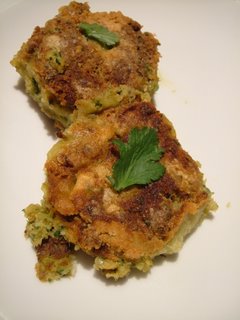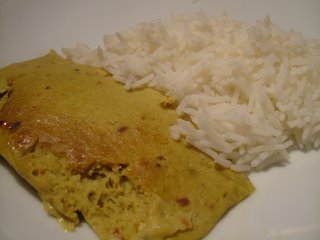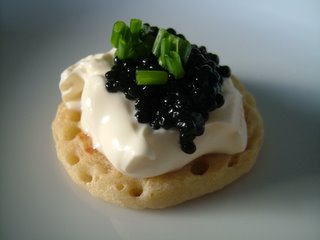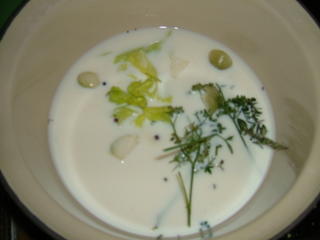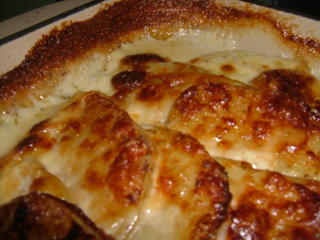 It might be a mile above sea level and a hundred miles from the coast, but Lake Tahoe has a sprinkling of accomplished seafood restaurants. Fresh Ketch, a few miles’ drive from the casinos at the Stateline on the South Shore, is an elegant restaurant on a private marina, overlooking the blue lake.
It might be a mile above sea level and a hundred miles from the coast, but Lake Tahoe has a sprinkling of accomplished seafood restaurants. Fresh Ketch, a few miles’ drive from the casinos at the Stateline on the South Shore, is an elegant restaurant on a private marina, overlooking the blue lake.
The menu offers a wide selection of seafoods alongside meat and vegetarian dishes. A ‘Treasures from the sea’ section was full of selections with special ingredients, to have instead of one of the excellent starters. Green-lipped mussel fritters, oysters on the half shell, a scallop and spinach gratin and a little dish of clams all jostled for attention. I opted for the clams.
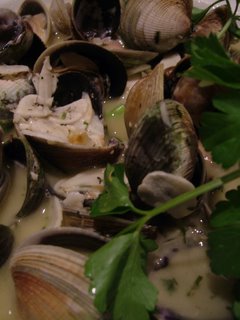 These were fresh New Zealand clams, in a broth of white wine, garlic, herbs and butter. They were delicate and scented; the waiter very thoughtfully brought an extra utensil for Mr Weasel, who was enjoying a hot-smoked trout salad. We mopped up the rich broth with bread. This was a promising start to the meal.
These were fresh New Zealand clams, in a broth of white wine, garlic, herbs and butter. They were delicate and scented; the waiter very thoughtfully brought an extra utensil for Mr Weasel, who was enjoying a hot-smoked trout salad. We mopped up the rich broth with bread. This was a promising start to the meal.
Skiing all day is a killer. It’ll do peculiar things to your appetite, convincing you that what you really, really need is a chunk of protein the size of your head. I don’t do my best ordering when I’ve spend the day skiing, and given the choice available (King crab, Ahi tuna, Tilapia) I should, if I’d had my head screwed on properly, have ordered some of the excellent fish. I didn’t. I asked for an Angus filet. Fortunately for me, it was a beautiful piece of meat, perfectly cooked. (One of my favourite things about dining in America is the ease you have in ordering a steak. Steaks you order rare actually come rare; in England, asking for a rare steak is a gamble. You’ll either end up with something so raw it’s still twitching, or a greying lump of cooked-solid tissue.)
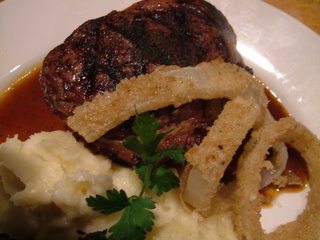 The steak was wrapped in a piece of pancetta, served with a port and shallot jus and garnished with the great American onion ring. I love onion rings, and this was a fine example; soft and sweet inside, and crisp outside, with a golden shell of crumbs. The steak was well-hung and tender.
The steak was wrapped in a piece of pancetta, served with a port and shallot jus and garnished with the great American onion ring. I love onion rings, and this was a fine example; soft and sweet inside, and crisp outside, with a golden shell of crumbs. The steak was well-hung and tender.
Mr Weasel’s main course was that day’s special; Albacore with a mango salsa. Delicious.
The food was so good we were compelled to finish everything on our plates. These being American-sized portions, we were barely able to move by the time we finished the main course, and didn’t make it as far as dessert. We’ll make the effort to go back next year and save some room for pudding.

